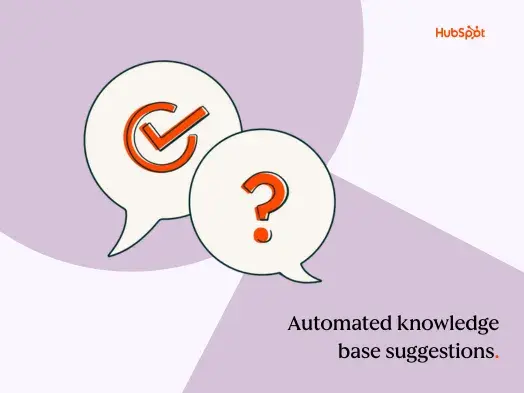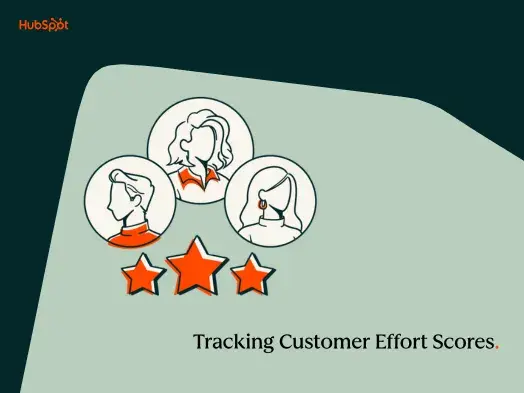70+ Customer Service Terms you Need to Be Aware Of
1. Agents
Also referred to as CSRs or Customer Service Representatives, these individuals interact directly with the customer. This can be done face-to-face, over the phone, via email, or via chat. Their job is to troubleshoot issues and find solutions for the customer.
2. Agent Empowerment
Do agents have the training, tools, support, and regular feedback they need to do their job properly? Setting them up for success allows agents to feel empowered. This leads to their overall engagement with the role and their morale in the workplace.
3. Agent Lifecycle
This refers to every interaction an agent has with a company throughout their entire tenure. This includes recruitment, onboarding, training (both initial and ongoing), feedback, reviews, all the way to termination.
4. Application Program Interface (API)
This term covers the way in which two software programs communicate with each other. This is how applications are built and personalized.
5. Average Handle Time
The average time it takes for your support team to resolve a ticket.
6. Average Reply Time
The average time it takes for your agents to get back to a customer. This takes into account all communications, not just the first contact.
7. B2B Customer Experience
Every interaction your customer has with your brand.
8. Backlog
When a help desk becomes overwhelmed and customer requests are not dealt with immediately, they become a backlog.
9. Benchmarking
Benchmarking allows employees and managers to evaluate performance against the goals or standards of the organization. This provides the opportunity to reward a job well done, and retrain or support an employee that is falling short of expectations.
10. Big Data
Companies are constantly collecting data on their customers and every interaction they have with the brand. This “big data” allows the organization to learn about their customers and make recommendations and develop new products based on this information.
11. Brand
Everything that comes to mind when a customer or potential customer hears the name of your company.
12. Brand Experience
Refers to how your customers experience your company (i.e through products and services or speaking to customer service) and see your brand.
13. Bug
A problem within your software or other product that you must send to your developers to correct.
14. Business Hours
Refers to the days and times that your business is open, as well as the time frames in which your customers can reach your support agents.
15. Business Rules
With so many aspects of business automated (i.e., email marketing), business rules are automation rules that manage various functions for an organization. In addition to being used for marketing purposes, business rules can be found in customer service regarding how calls are routed, dealt with, and resolved.
16. Call Center
A call center is a type of contact center that receives a high volume of phone calls for a company. Some call centers provide customer service for multiple companies in one building.
17. Canned Response
Frequently asked questions or customer queries are often answered with canned, preset responses. This helps service reps save time and focus on high-impact customer issues.
18. Change Management
A process by which change is executed within a business or organization.
19. Channels
The different ways a customer or potential customer can get in touch with your team. This can include phone, chat, email, social media, and more.
20. Churn
Poor customer service will likely result in a high churn rate or the number of customers that stop doing business with an organization. This number is essential as it generally costs seven times more to get a new customer than it does to retain an existing one.
21. Coaching
Providing ongoing support and feedback for your agents is essential to a successful customer service team. Coaching can look like one-on-one meetings, listening to other agents’ phone calls, feedback, and much more.
22. Cross-Selling
Not all agents are solely providing customer service. Many companies will give them the responsibility of selling products or services to existing customers. These are often in response to a pain point the customer has expressed.
23. Customer Charter
This document sets the expectations for customer service in an organization.
24. Customer-Centric
When a company focuses on providing the best possible customer service, its culture is “customer-centric.”
25. Customer Effort
How much work does your customer have to do to resolve a problem? The less work they have to do, the happier your customers will be.
26. Customer Experience
Do your customers walk away from your brand happy, satisfied, and eager to do business with you again? Or, are your customers angry, resentful, and walking away for good? The Customer Experience describes how your customer feels about your brand and can be won or lost in a single interaction.
27. Customer Lifetime Value (CLTV)
How much will a single customer bring in during their lifetime? You can improve this key metric by having a top-notch product and providing delightful customer service that has customers returning again and again. Agents can also use cross-selling and upselling to increase the revenue value of a customer.
28. Customer Satisfaction Score (CSAT)
The average score customers give to a specific interaction with your company; this is a basic but essential metric to understand.
29. Customer Service
The service your company provides to its customers in the form of troubleshooting, training, information, advice, and more.
30. Downtime
This is the time that a product or service is not available because of problems or ongoing maintenance in the company.
31. Empathy
For a customer service agent, empathy may be an essential skill in the world. When an agent empathizes with a customer, it increases the customer’s faith that they are heard and understood and improves their satisfaction with the interaction and the brand.
32. Escalation Management
There comes a time when your level one agent will be unable to handle a situation. When this happens, the tickets will be escalated to a level 2 agent or a manager to solve the issue.
33. Feedback
This helpful information is provided to the company by customers. They will be asked to share their opinions of the product or service you offer and often asked how the brand itself could be improved.
34. Feedback Loop
Once you’ve gotten customer feedback, what do you do with it? A feedback loop refers to receiving feedback, taking action on that feedback, and then communicating back to your customer.
35. First Call Resolution
How often can your team resolve a customer service issue during the first contact? FCR is generally expressed as a percentage or ratio, and the higher this number, the more it says for your customer service. If this number is low, your agents may need to be given more training or tools to do their jobs more efficiently.
36. First Contact Resolution Rate
This is a customer service metric that determines how often agents are able to resolve an issue on the first call, chat, or email.
37. First Reply Time
How long does it take before an agent responds to a support ticket? Customers seeking help are likely already frustrated. The shorter the First Reply Time, (hopefully, just a few seconds or minutes), the happier your customer will be.
38. Frequently Asked Questions (FAQs)
This section of a website or document includes the most commonly asked questions (along with answers) from customers and prospects regarding your brand, services, products, or policies.
39. Knowledge Base
Oftentimes, agents will be faced with the same questions and challenges multiple times a day. A Knowledge Base is a centralized, online database that provides resources for troubleshooting and solving problems. While these are aimed at the agents and other employees within your organization, there are also customer knowledge bases where your customers or clients can go for answers to frequently asked questions.
40. Help Desk
These platforms allow companies to manage their customer support digitally.
41. Journey
Every engagement and touchpoint your customer has with your brand becomes their “journey.” This includes the decisions they make along the way.
42. Journey Mapping
Creating a visual representation of your customer’s journey will help you better understand their wants and needs so you can provide the best possible experience.
43. Key Performance Indicators (KPI)
These metrics determine how your employees’ performance is aligned with a specific goal you’ve set.
44. Lifecycle
Similar to a customer journey, however this includes every step from their initial thoughts about the product, to purchasing it, using it in their lives, and then staying loyal to your brand.
45. Loyalty
Customers choose to continue patronizing your business even when your prices are higher than the competition.
46. Metric
What gets measured gets improved. Metrics are used to track customer service activities.
47. Net Promoter Score (NPS)
As a customer yourself, you’ve probably encountered a survey or question that asks, “On a scale of 1-10, how likely are you to recommend (business name) to a friend or colleague?”
This is a Net Promoter Score and higher numbers (9 and 10) are considered promoters for your business, whereas lower scores (6 or less) are considered detractors.
48. Net Promoter System
This includes the net promoter score and allows for open-ended feedback regarding the customer experience.
49. Omni-Channel
In a customer support arena, omni-channel refers to multiple channels (such as chat, email, phone, social media, etc.) operating and interacting to create a seamless experience for the customer.
50. Onboarding
This process helps get a customer up and running with Software as Service products. This provides them with the knowledge to comfortably use the product and strengthens your relationship with the customer while increasing engagement with your brand.
51. Online Experience
This refers to the experience a customer has when they communicate with an agent through your website. This can include how long it takes for the website to load, how easy it is to navigate throughout the site, and much more.
52. Outsourcing
For convenience and financial reasons, companies may choose to bring in a third party to help them with their customer service and support functions.
53. Personalization
It’s been scientifically proven that a person’s favorite word is their name. Using a customer’s name in conversation and remembering details about them can help create a better experience.
54. Product Feature
What features does your product offer? This could include its appearance, functionality, etc.
55. Quality Assurance
A product or service must maintain quality from production all the way to the sales process and more.
56. Resolution Rate
Often used to determine an agent’s effectiveness and speed, this is the percentage of tickets your agents resolve as compared to how many they receive.
57. Retention
Retention refers to your ability to continuously keep loyal customers that make repeat purchases from your business. It costs more to gain a new customer than hold on to an existing one, so many businesses prioritize customer retention.
58. Self-Service Portals
These online platforms allow customers to access solutions without the assistance of an agent. They are also used by agents to share information with customers.
59. Self-Service Ratio
This ratio refers to how many customers utilize self-service resources as opposed to how many submit tickets to live agents.
60. Service Culture
Your customer service team will share behaviors, beliefs, and values that govern how they interact with customers.
61. Service Level Agreement (SLA)
An SLA defines the expectations in a customer service situation with a vendor. It often refers to specific metrics and performance levels that must be maintained.
62. Subject Matter Experts (SMEs)
These individuals have more knowledge about a product, service, or technology and can be used as a resource for any issues within their realm of expertise.
63. Support Ticket
This ticket documents all pertinent information for a customer service issue. Who are they? What is the issue they are having, and with what product? What steps were taken to troubleshoot and resolve? Who is working on the issue? And what is the resolution? This information can be referred back to any time and by anyone with access to the system.
64. Text Analytics
This system takes feedback received through text and transfers it into trackable and measurable data which can help you make better decisions moving forward.
65. Ticket
Every individual situation that enters a help desk will be logged into the system as a ticket. Some companies call this a “conversation” to sound more human.
66. Ticket Routing
Ticket Routing is how your automated system (or human operator) determines which agents will handle specific customer issues. Routing is often based on the skill level of different agents and their availability.
67. Ticket Status
Where a ticket is at any time of its life cycle. For example, just opened or resolved.
68. Ticket Volume
How many tickets agents and customers create each day. This number allows you to properly staff your help desk, and organize workloads for your employees.
69. Tiered Support
This is utilized to manage customer support workflows and refers to groups of tickets being assigned to specific agents.
70. Touchpoint
This term is used to describe any contact a customer has with your brand or company. This can include viewing your website, opening an email from your marketing department, speaking with an agent, and many other interactions.
71. Voice
This term refers to a consistent personality that your customer service team will use with customers.
72. Widget
How users perform functions through a software interface or platform.
Customer service is an art form that any successful company must master. Now that you’re armed with the most essential and popular Customer Service Terms, you’ve got the tools to wow your customers with exceptional service.
Customer Service
.png?width=112&height=112&name=Image%20Hackathon%20%E2%80%93%20Vertical%20(9).png)








.png)

-2.png)
